
Amiga is a family of personal computers introduced by Commodore in 1985. The original model is one of a number of mid-1980s computers with 16- or 16/32-bit processors, 256 KB or more of RAM, mouse-based GUIs, and significantly improved graphics and audio compared to previous 8-bit systems. These systems include the Atari ST—released earlier the same year—as well as the Macintosh and Acorn Archimedes. Based on the Motorola 68000 microprocessor, the Amiga differs from its contemporaries through the inclusion of custom hardware to accelerate graphics and sound, including sprites and a blitter, and a pre-emptive multitasking operating system called AmigaOS.

The Amiga 500, also known as the A500, is the first low-end version of the Amiga home computer. It contains the same Motorola 68000 as the Amiga 1000, as well as the same graphics and sound coprocessors, but is in a smaller case similar to that of the Commodore 128.

Industry Standard Architecture (ISA) is the 16-bit internal bus of IBM PC/AT and similar computers based on the Intel 80286 and its immediate successors during the 1980s. The bus was (largely) backward compatible with the 8-bit bus of the 8088-based IBM PC, including the IBM PC/XT as well as IBM PC compatibles.

The Motorola 68060 ("sixty-eight-oh-sixty") is a 32-bit microprocessor from Motorola released in 1994. It is the successor to the Motorola 68040 and is the highest performing member of the 68000 series. Two derivatives were produced, the 68LC060 and the 68EC060.

PowerPC is a reduced instruction set computer (RISC) instruction set architecture (ISA) created by the 1991 Apple–IBM–Motorola alliance, known as AIM. PowerPC, as an evolving instruction set, has been named Power ISA since 2006, while the old name lives on as a trademark for some implementations of Power Architecture–based processors.

The Tandy 1000 is the first in a line of IBM PC compatible home computer systems produced by the Tandy Corporation for sale in its Radio Shack and Radio Shack Computer Center chains of stores.

In computing, an expansion card is a printed circuit board that can be inserted into an electrical connector, or expansion slot on a computer's motherboard to add functionality to a computer system. Sometimes the design of the computer's case and motherboard involves placing most of these slots onto a separate, removable card. Typically such cards are referred to as a riser card in part because they project upward from the board and allow expansion cards to be placed above and parallel to the motherboard.

The Amiga 2000, or A2000, is a personal computer released by Commodore in March 1987. It was introduced as a "big box" expandable variant of the Amiga 1000 but quickly redesigned to share most of its electronic components with the contemporary Amiga 500 for cost reduction. Expansion capabilities include two 3.5" drive bays and one 5.25" bay that could be used by a 5.25" floppy drive, a hard drive, or CD-ROM once they became available.
AmigaOne is a series of computers intended to run AmigaOS 4 developed by Hyperion Entertainment, as a successor to the Amiga series by Commodore International. Earlier models were produced by Eyetech, and were based on the Teron series of PowerPC POP mainboards. In September 2009, Hyperion Entertainment secured an exclusive licence for the AmigaOne name and subsequently new AmigaOne computers were released by A-Eon Technology and Acube Systems.
MorphOS is an AmigaOS-like computer operating system (OS). It is a mixed proprietary and open source OS produced for the Pegasos PowerPC (PPC) processor based computer, PowerUP accelerator equipped Amiga computers, and a series of Freescale development boards that use the Genesi firmware, including the Efika and mobileGT. Since MorphOS 2.4, Apple's Mac mini G4 is supported as well, and with the release of MorphOS 2.5 and MorphOS 2.6 the eMac and Power Mac G4 models are respectively supported. The release of MorphOS 3.2 added limited support for Power Mac G5. The core, based on the Quark microkernel, is proprietary, although several libraries and other parts are open source, such as the Ambient desktop.

The Amiga 4000, or A4000, from Commodore is the successor of the Amiga 2000 and Amiga 3000 computers. There are two models: the A4000/040 released in October 1992 with a Motorola 68040 CPU, and the A4000/030 released in April 1993 with a Motorola 68EC030.

In a computer system, a chipset is a set of electronic components on one or more ULSI integrated circuits known as a "Data Flow Management System" that manages the data flow between the processor, memory and peripherals. It is usually found on the motherboard of computers. Chipsets are usually designed to work with a specific family of microprocessors. Because it controls communications between the processor and external devices, the chipset plays a crucial role in determining system performance.
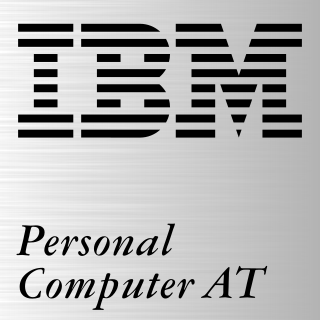
The IBM Personal Computer AT was released in 1984 as the fourth model in the IBM Personal Computer line, following the IBM PC/XT and its IBM Portable PC variant. It was designed around the Intel 80286 microprocessor.
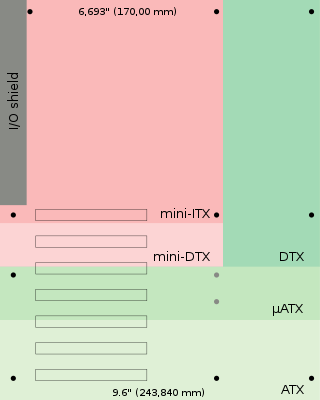
Mini-ITX is a 170 mm × 170 mm motherboard form-factor, developed by VIA Technologies in 2001. They are commonly used in small-configured computer systems. Originally, they were a niche product, designed for fan-less cooling with a low power consumption architecture, which made them useful for home theater PC systems, where fan noise can detract from the cinema experience. The four mounting holes in a Mini-ITX board line up with four of the holes in ATX-specification motherboards, and the locations of the backplate and expansion slot are the same. Mini-ITX boards can therefore often be used in cases designed for ATX, micro-ATX and other ATX variants if desired.
This is a list of models and clones of Amiga computers.
AmigaOS is the proprietary native operating system of the Amiga personal computer. Since its introduction with the launch of the Amiga 1000 in 1985, there have been four major versions and several minor revisions of the operating system.
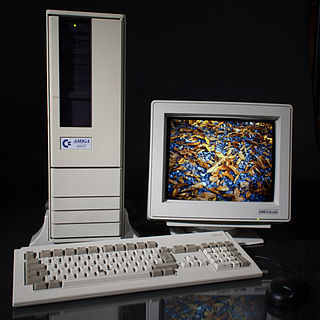
The Amiga 4000T, also known as A4000T, is a tower version of Commodore's A4000 personal computer. Using the AGA chipset, it was originally released in small quantities in 1994 with a 25 MHz Motorola 68040 CPU, and re-released in greater numbers by Escom in 1995, after Commodore's demise, along with a new variant which featured a 50 MHz Motorola 68060 CPU. Despite the subsequent demise of Escom, production was continued by QuikPak in North America into at least 1997.
In computing, the motherboard form factor is the specification of a motherboard – the dimensions, power supply type, location of mounting holes, number of ports on the back panel, etc. Specifically, in the IBM PC compatible industry, standard form factors ensure that parts are interchangeable across competing vendors and generations of technology, while in enterprise computing, form factors ensure that server modules fit into existing rackmount systems. Traditionally, the most significant specification is for that of the motherboard, which generally dictates the overall size of the case. Small form factors have been developed and implemented.
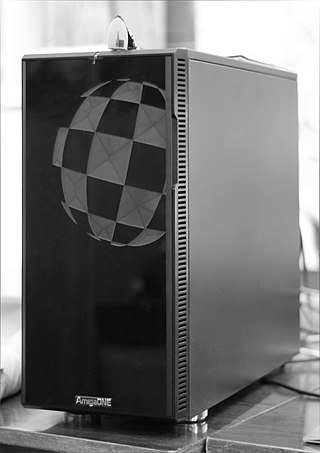
AmigaOne X1000 is a PowerPC-based personal computer intended as a high-end platform for AmigaOS 4. It was announced by A-Eon Technology CVBA in partnership with Hyperion Entertainment and released in 2011. Its name pays homage to the Amiga 1000 released by Commodore in 1985. It is, however, not hardware compatible with the original Commodore Amiga system.
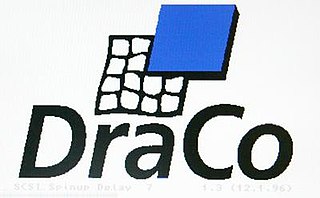
The DraCo, also known as DraCo Vision in one of its later models, was a non-linear video editing workstation created by MacroSystem Computer GmbH in 1994, based on the Amiga platform.














